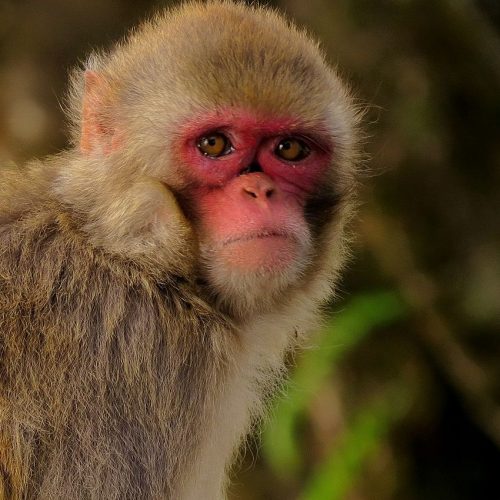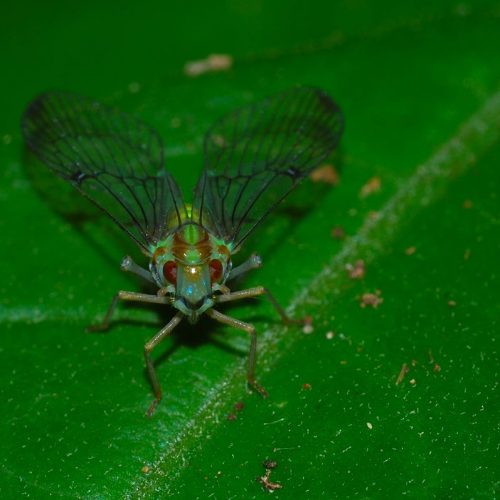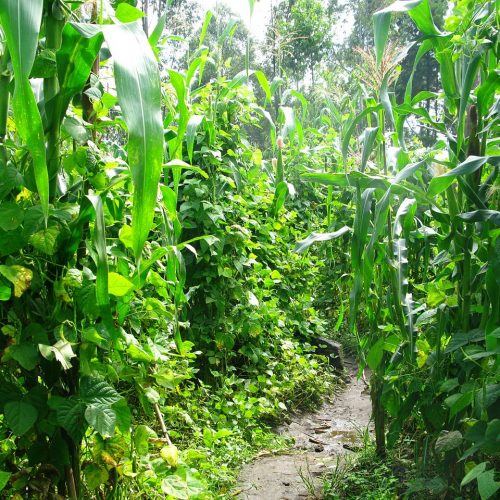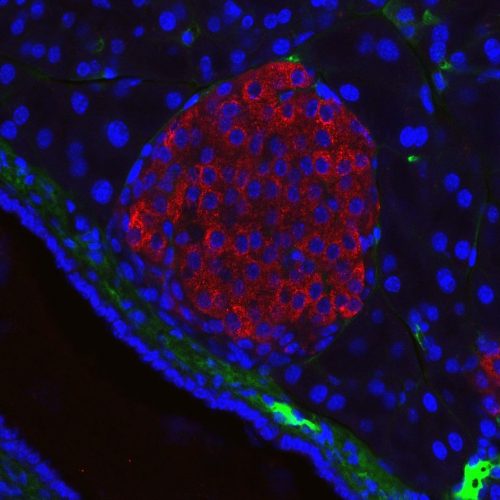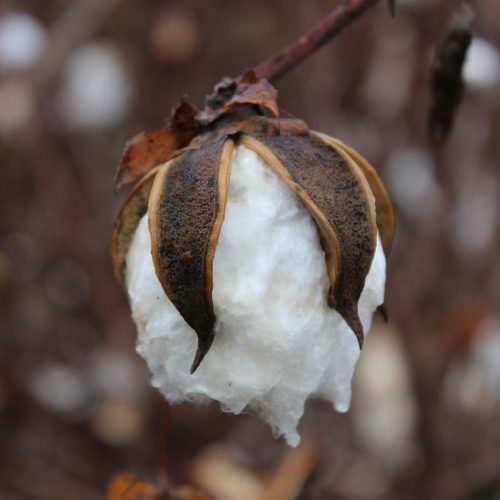Crop diseases have always been one of the main combatants in the war between farmers and nature. Regardless of the source, whether viral, bacterial, fungal, or other, diseases that affect plant health, growth, and production have devastated every type of crop ever grown. It has only been through strenuous effort that farmers have fought back and kept their crops growing, boosted in the past century by new scientific advances that make more options available. But, even with that, many diseases continue to lower yields and damage subsistence farmers the worst of all. Every once in a while, these diseases even manage to wipe out an entire breed of a crop permanently.
This was almost the case with the banana. In a prior generation, the most popular exported banana breed was the Gros Michel found in Southeast Asia and later grown extensively in Central America. It was greedily consumed by European nations and the United States, creating a huge market boom that pushed out most other banana breeds. However, in the 1950s, a new fungal growth called Panama disease whipped through the Central countries, wiping out vast fields of banana trees and completely hampering the export of the breed. For a time, the banana market as a whole was on the verge of collapse until the commercialization of a resistant cultivar named Cavendish, which ultimately took over the market as the new dominant breed.
A New Challenger
If only Panama disease was the single menace that bananas had to contend with. Alas, there is far more to consider. In the current year of 2016, there are two main diseases that serve as the largest threats to the worldwide market. One of these, banana Xanthomonas wilt, has only recently become an up and comer in the hazardous to bananas scene. Though there are already methods underway to hopefully deal with it and all of its cousin diseases that affect other crops, as previously discussed. The other does not have recency as its claim to fame, but has instead resisted attempts to eradicate its destructive involvement with banana crops ever since its first recorded emergence in 1879. Similar to Xanthomonas wilt, banana bunchy top virus (BBTV) does not exist in isolation, though it does have more specificity in that its cousin species focus on infecting the banana’s Musa genus as a whole.[1]
In its long history, BBTV has been responsible for more than one disaster in the banana industry, one of the most severe being in the 1920s that almost wiped out the entire banana crop in Australia. BBTV continues to be a major production hazard around the world for banana growers, though some regions inexplicably remain untouched by the spread of the virus, likely though some combination of chance and security protocols.[1] Most research on how to deal with the virus has focused on properly understanding its genetic structure and its method of infection of bananas and other Musa crops, as both sides are more complicated than expected.
Starting With Understanding
A study from 1997 was able to identify two RNA strands encoded by the virus, in addition to one replication protein, named Rep, that had been previously discovered. These two mRNA transcripts related to the Rep protein and were also found in tobacco plants that were modified by Agrobacterium. While this was a modest step in understanding, it helped to identify potential areas of attack in order to disable the functions of the virus.[2]
Another study from 2000 took the five promoter genes found in BBTV, labeled BT1-5, and used the green fluorescent protein (GFP) and uidA genes to measure the amount of expression each promoter provided and in what type of banana cells they expressed the strongest. The promoters themselves were found to be highly variable in their expression, depending on the type of cell and what type of gene follower they were promoting, with BT4 and BT5 expressing GFP the strongest and the first three expressing GUS, also added via the ubi1 intron from maize plants, the most. They were discovered, however, to directly affect the banana cells responsible for vascular-associated expression for transferring nutrients through the plant’s tissues.[3]
The following year, a similar study looked at two other promoter regions, named S1 and S2, and had their genetic sequence combined with the β-glucuronidase reporter gene in order to record their activity. Both tobacco and bananas were used to see if there was any difference in gene activation and, indeed, the two regions were found to be more active in tobacco plants. The focus of their activity was on root systems and vascular tissues, confirming previous knowledge.[4]
Rolling Out The Interference
The time for the prior research on the Rep protein to come to fruition took more than a decade, but scientists were finally able to utilize the knowledge on it to create the first draft of a banana resistant to BBTV. Discussed in a 2012 study, intron-hairpin-RNA (ihpRNA) transcripts were used that related to that replication initiation protein, Rep. After insertion into selected banana plants, the resulting test subjects were found to be completely immune to BBTV, even after being covered for six months in aphids that are the natural carriers for the virus. Tissue samples from the plants found no evidence of viral proteins at all and the ihpRNA transcripts were shown to have been integrated into the banana genome stably and in a manner that could be passed on to further banana generations. This testing also confirmed that the transcripts acted as expected, by using RNA interference to block the virus from properly activating their own Rep proteins to start replication.[5]
Due to this success, research on RNA interference methods became the norm in transgenic banana research, with different ways to achieve BBTV resistance being looked into. A 2013 study that looked into making a breed of banana tree known as the Grand Nain that is itself the source of the aforementioned Cavendish banana used four different BBTV gene vectors. These were transferred via Agrobacterium and had added viral primers to help the plant develop specific resistance against infection. Overall, the process saw a fair amount of success with the virus being staved off for even up to 24 weeks, though it did not achieve full resistance.[6]
Research using RNA interference and ihpRNA transcripts continues to this day, though the process has expanded significantly. In July of 2015, testing in Mumbai attempted to induce resistance in a banana breed not just to BBTV, but also to Fusarium wilt by silencing multiple genes at once from being allowed to produce RNA. Only two of the five produced lines were ultimately successful, although they were able to enact a high level of resistance to both infections. The conclusion of this study recommended that the most economical approach with RNA interference is to essentially go for broke and try to enact gene silencing against as many banana disease types as possible. While only a small proportion of the produced lines will be successful, only one is needed to crush the threat of banana diseases once and for all.[7]
Banana viral experimentation has taken a separate road from most of the other crop research fields. Sure, some have dabbled in RNA interference before, but rarely have they exclusively targeted it as a method as banana research has in the past two decades. This may have to do with the particular intractability of banana diseases, that have largely evaded attempts to deal with them for over a century and have only seen particular inoculation progress in recent years. Regardless of the reason, it is a simple fact that the days of banana diseases, banana bunchy top virus principally, are numbered.
References
- Dale J, Burns T, Oehlschlager S, Karan M, Harding R. 1992. Banana Bunchy Top Virus: prospects for control through biotechnology. In: Biotechnology Applications for Banana and Plantain Improvement. Bioversity International. [accessed June 26, 2016]. https://books.google.com/books?id=IDLuFcGDt60C
- Beetham PR, Hafner GJ, Harding RM, Dale JL. 1997. Two mRNAs are transcribed from banana bunchy top virus DNA-1. The Journal of General Virology [accessed 2016 Jun 26]; 78:229–236. http://www.ncbi.nlm.nih.gov/pubmed/9010308
- Dugdale B, Becker DK, Beetham PR, Harding RM, Dale JL. 2000. Promoters derived from banana bunchy top virus DNA-1 to −5 direct vascular-associated expression in transgenic banana (Musa spp.). Plant Cell Reports [accessed 2016 Jun 26]; 19:810–814. http://link.springer.com/article/10.1007/s002999900185
- Hermann S, Becker D, Harding R, Dale J. 2001. Promoters derived from banana bunchy top virus-associated components S1 and S2 drive transgene expression in both tobacco and banana. Plant Cell Reports [accessed 2016 Jun 26]; 20:642–646. http://link.springer.com/article/10.1007%2Fs002990100348
- Shekhawat UK, Ganapathi TR, Hadapad AB. 2012. Transgenic banana plants expressing small interfering RNAs targeted against viral replication initiation gene display high-level resistance to banana bunchy top virus infection. The Journal of General Virology [accessed 2016 Jun 26]; 93:1804–1813. http://jgv.microbiologyresearch.org/content/journal/jgv/10.1099/vir.0.041871-0
- Krishna B, Kadu AA, Vyavhare SN, Chaudhary RS, Joshi SS, Patil AB, Subramaniam VR, Sane PV. 2013. RNAI-Mediated Resistance Against Banana Bunchy Top Virus (BBTV) In “Grand Nain” Banana. Acta horticulturae [accessed 2016 Jun 26]; 974:157–164. http://www.actahort.org/books/974/974_18.htm
- Ghag SB, Shekhawat UK, Hadapad AB, Ganapathi TR. 2015. Stacking of Host-induced Gene Silencing Mediated Resistance to Banana Bunchy Top Virus and Fusarium Wilt disease in Transgenic Banana Plants. Current Trends in Biotechnology and Pharmacy [accessed 2016 Jun 26]; 9:212–221. http://www.indianjournals.com/ijor.aspx?target=ijor:ctbp&volume=9&issue=3&article=002
Written by: Sterling Ericsson
Word Count: 1,279
Type: News Byte

